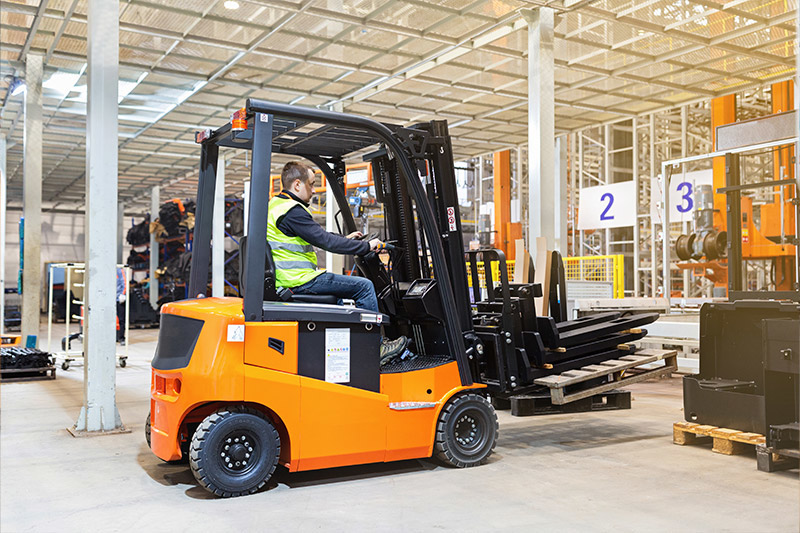Stand Up vs Sit Down Forklift & What is the difference?
Counterbalance forklifts: Stand up and Sit Down Trucks
There are two types of counterbalance forklift trucks: Stand-up and Sit-down. We will explain the difference shortly. But first, let's clarify what a counterbalance truck is.
A counterbalanced forklift is an industrial vehicle designed to lift and transport loads within warehouses or industrial settings. It achieves this by counterbalancing the load's weight with either cast iron or the forklift’s lead acid battery, typically located at the rear of the truck.
These forklifts are considered versatile utility vehicles, often used on docks or in aisles that are at least 10 to 12 feet wide.
Types of counterbalanced lift trucks:
As noted earlier, there are two main types of counterbalanced forklifts:
- Stand-up
- Sit-down
Operators can either sit down or stand up to operate the forklift. These trucks can handle pallet loads stacked up to four high. Warehouses and distribution centers primarily use them for shipping and receiving tasks. They're also well-suited for moving pallets in and out of storage racks. In the materials handling industry, counterbalanced forklifts are categorized as Class 1 trucks.
Sit-Down Counterbalance Trucks
Sit-down forklifts can be further classified into 3-wheel and 4-wheel models. If the operator doesn't frequently leave the vehicle, such as when moving between docks and storage, the sit-down model is typically preferred. These forklifts are ideal for long-distance tasks where operators stay seated for extended periods during their shift.
Sit-down counterbalance trucks have a lower profile, providing better vertical clearance to avoid overhead obstacles. These trucks excel at navigating inclines, have lower wheel loading, and can travel faster than their stand-up counterparts. The 3-wheel models are favored for operations in narrow aisles or where high maneuverability is essential.
Stand-Up Counterbalanced Trucks
A stand-up counterbalance forklift has a shorter head length compared to sit-down models, giving the operator more room to maneuver in tight spaces and crowded docks. This makes it a popular choice for warehouses looking to maximize storage space.
Here are some features to consider for stand-up counterbalance trucks:
- Multifunctional handle versus levers, and plugging versus braking – allowing the operator to select the opposite direction while traveling to stop.
- Visibility for traveling in all directions.
- Various load capacities, ranging from 2,000 to 6,000 pounds.
- Fork lengths and masts come in different sizes to suit various needs.
Size of the truck and mast
If your company is considering acquiring a counterbalance forklift, ensure you assess the specifications to choose the right truck size and mast based on your decision between a stand-up or sit-down configuration.
When choosing a mast, consider:
- Overall collapsed height
- Elevated height
- Extended height
- Hydraulic features like side shift or mast tilt
For the truck size, factor in:
- Maximum load weight
- Height reach
- Hydraulic functions
- Mast size and height requirements for loading
When not to choose a counterbalanced forklift
Counterbalanced forklifts aren't suitable for all warehouse tasks. They are not ideal for case or piece picking, working in narrow or very narrow aisles, or handling storage retrieval tasks where loads are stored above 260 inches.
Please log in to leave a comment.



No Comments Yet